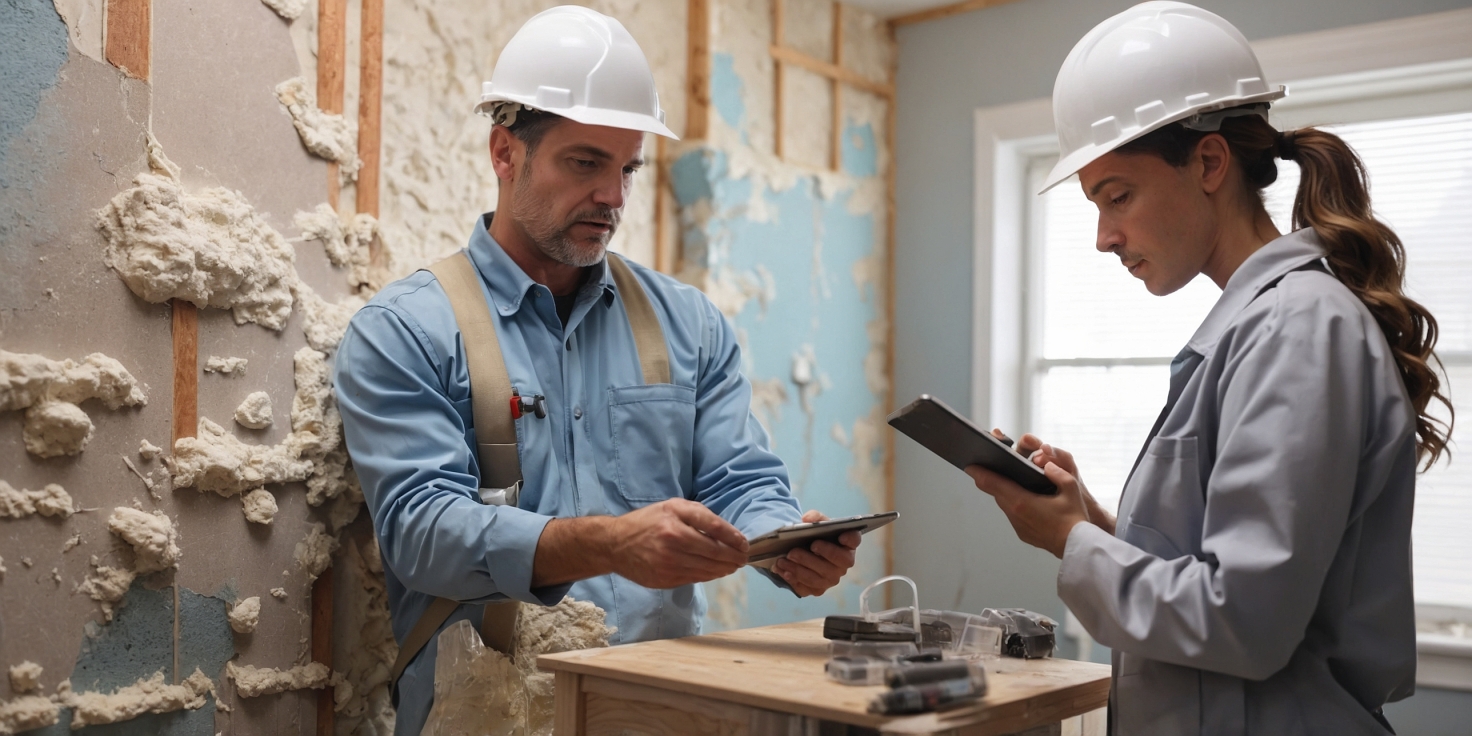Mold is a silent intruder that can wreak havoc on your property, especially when it festers in hidden areas like wall cavities. Often undetected until significant damage has occurred, mold can compromise structural integrity, reduce indoor air quality, and pose serious health risks. For property owners in South Florida, where humidity levels are persistently high, mold is not just a nuisance—it’s a recurring threat. Understanding how to identify, document, and file a claim for mold in wall cavities is crucial to protecting your investment and ensuring your insurance policy works for you.
At LMR Public Adjusters, South Florida’s premier public adjusters, we specialize in advocating for property owners to maximize insurance claims. Our personalized and dedicated team ensures that you receive the compensation you deserve for mold-related damages. This comprehensive guide will walk you through every step of the process—from identifying mold in wall cavities to filing a successful insurance claim. Whether you’re a homeowner or a commercial property manager, this resource is tailored to equip you with the knowledge and tools needed to navigate mold claims with confidence.
Understanding Mold in Wall Cavities
Mold in wall cavities is particularly insidious because it often goes unnoticed until it causes visible damage or health issues. Wall cavities provide the perfect environment for mold to thrive—dark, damp, and poorly ventilated. Common causes include water leaks from plumbing, roof damage, or flooding. Once mold takes hold, it can spread rapidly, feeding on drywall, insulation, and wood framing.
Early signs of mold in wall cavities include a musty odor, discoloration on walls, peeling paint, and unexplained allergic reactions among occupants. However, because these signs can be subtle or attributed to other issues, mold often remains hidden until it becomes a major problem. This is why regular inspections and prompt attention to water damage are essential.
In South Florida, the climate exacerbates mold growth. High humidity levels and frequent storms create ideal conditions for mold to flourish. If you suspect mold in your wall cavities, it’s crucial to act quickly. Delaying remediation can lead to extensive property damage and complicate the insurance claims process.
Professional mold inspections use tools like moisture meters, infrared cameras, and air quality tests to detect hidden mold. These assessments are vital for documenting the extent of the damage and supporting your insurance claim. For more information on how mold damage is assessed, visit our mold damage page.
Steps to Take When You Discover Mold
Discovering mold in your wall cavities can be alarming, but taking the right steps immediately can mitigate damage and strengthen your insurance claim. Here’s what you should do:
- Document the Damage: Take clear photographs and videos of any visible mold, water stains, or structural damage. Include wide shots and close-ups to capture the full extent of the issue.
- Stop the Source: Identify and stop the source of moisture. Whether it’s a leaking pipe, roof damage, or flooding, addressing the root cause is essential to prevent further mold growth.
- Contact a Professional: Hire a licensed mold inspector or remediation expert to assess the damage. Their report will be critical for your insurance claim.
- Notify Your Insurance Company: Report the mold damage to your insurer as soon as possible. Provide them with your documentation and the professional assessment.
- Consult a Public Adjuster: Before agreeing to any settlement, consult with a public adjuster. At LMR Public Adjusters, we help you understand your policy, evaluate the damage, and negotiate with your insurer to maximize your claim.
Acting quickly not only limits the spread of mold but also demonstrates due diligence to your insurance provider. Insurers may deny claims if they believe the damage resulted from neglect or delayed action. For more guidance on handling property damage, explore our property claims resources.
Filing an Insurance Claim for Mold in Wall Cavities
Filing an insurance claim for mold in wall cavities can be complex and time-consuming. Insurance companies often scrutinize mold claims closely, and coverage varies significantly depending on your policy. Here’s a step-by-step guide to help you navigate the process:
1. Review Your Insurance Policy: Start by reviewing your homeowner’s or commercial property insurance policy. Look for clauses related to mold, water damage, and exclusions. Some policies cover mold only if it results from a covered peril, such as a burst pipe or storm damage.
2. Gather Documentation: Compile all evidence of the mold damage, including photographs, inspection reports, repair estimates, and receipts for any emergency repairs. This documentation will support your claim and help establish the cause and extent of the damage.
3. File the Claim Promptly: Contact your insurance company to file the claim. Provide all necessary documentation and be prepared to answer questions about the cause of the mold and the steps you’ve taken to mitigate the damage.
4. Work with a Public Adjuster: Insurance companies often undervalue mold claims or deny them altogether. A public adjuster like LMR Public Adjusters can advocate on your behalf, ensuring that your claim is accurately assessed and fairly compensated. Learn more about our services on our about us page.
5. Follow Up: Stay in regular contact with your insurer and adjuster. Keep records of all communications and follow up to ensure your claim is progressing.
Filing a mold claim requires diligence, documentation, and expert support. Don’t navigate this process alone—our team is here to help you every step of the way.
Common Challenges and How to Overcome Them
Filing a claim for mold in wall cavities is rarely straightforward. Property owners often face several challenges that can delay or derail their claims. Understanding these obstacles and how to overcome them is key to a successful outcome.
1. Policy Exclusions: Many insurance policies exclude mold damage unless it results from a covered peril. For example, mold caused by a burst pipe may be covered, while mold from long-term humidity may not. To address this, work with a public adjuster who can interpret your policy and build a case for coverage.
2. Insufficient Documentation: Inadequate evidence can lead to claim denial. Always document the damage thoroughly and obtain professional assessments. Keep records of all repairs and communications with your insurer.
3. Delayed Reporting: Insurance companies may deny claims if they believe the damage was not reported promptly. Report mold damage as soon as it’s discovered and take immediate steps to mitigate further harm.
4. Low Settlement Offers: Insurers may offer settlements that don’t fully cover the cost of remediation and repairs. A public adjuster can negotiate on your behalf to ensure you receive fair compensation.
5. Disputes Over Cause: Determining the cause of mold can be contentious. Insurers may argue that the mold resulted from neglect rather than a covered event. Professional inspections and expert testimony can help establish the true cause.
At LMR Public Adjusters, we have extensive experience handling mold claims and overcoming these challenges. Our team is dedicated to protecting your rights and maximizing your claim. For answers to common questions, visit our FAQ page.
Why Choose LMR Public Adjusters
When dealing with mold in wall cavities, having the right advocate on your side can make all the difference. LMR Public Adjusters is South Florida’s premier public adjusting firm, known for our personalized approach and unwavering commitment to our clients. Here’s why property owners trust us:
- Expertise: Our team has in-depth knowledge of insurance policies, mold damage, and the claims process. We know how to build strong cases that insurers can’t ignore.
- Personalized Service: We treat every claim as unique, providing tailored support and guidance from start to finish.
- Proven Results: We’ve helped countless property owners secure fair settlements for mold and other types of damage. Check out our Google reviews to see what our clients say.
- Local Knowledge: Based in South Florida, we understand the specific challenges property owners face in this region. Whether you’re in Fort Lauderdale or surrounding areas, we’re here to help.
Don’t let mold damage compromise your property or your peace of mind. With LMR Public Adjusters by your side, you can navigate the claims process with confidence and clarity.
Conclusion
Mold in wall cavities is more than just an unsightly problem—it’s a serious issue that can affect your health, your property’s value, and your financial well-being. In South Florida’s humid climate, the risk of mold is ever-present, making it essential for property owners to stay vigilant and proactive. From identifying the early signs of mold to filing a comprehensive insurance claim, every step matters.
Understanding your insurance policy, documenting the damage thoroughly, and acting quickly are key to a successful claim. However, the complexities of mold claims often require professional support. That’s where LMR Public Adjusters comes in. Our experienced team is dedicated to helping you navigate the claims process, overcome obstacles, and secure the compensation you deserve.
Don’t wait until mold becomes a costly disaster. If you suspect mold in your wall cavities or have experienced water damage recently, take action now. Contact LMR Public Adjusters today and let us help you protect your property and your future. Visit our home damage page to learn more about how we can assist you.




